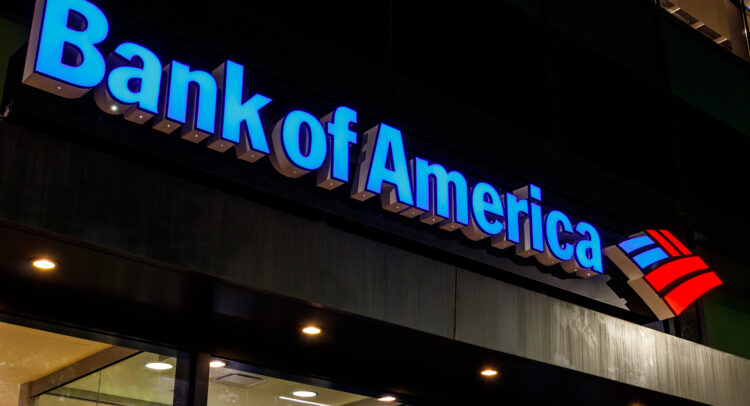The banking industry faces challenges when interest rates rise after a period of exceptionally low rates, impacting the value of bank assets. This is exemplified by Bank of America (NYSE:BAC), which is reported to have experienced a decline of $110 billion over the first quarter on a $595 billion segment of its assets.
The Role of Bank Designations
When banks invest in bonds, they are required to designate them in one of three ways, Available-for-Sale (AFS), Hold-to-Maturity (HTM), or Trading. The designation tells the accounting department whether to value the securities as assets on the bank’s balance sheet using book value (purchase cost) or market value.
An HTM designation allows the bank to state the value of the assets on the company’s books at their original cost. This works in the bank’s favor when rates go up, causing bond values to decline because the lower market value is not reflected on the bank’s books under an HTM designation.
An AFS designation requires the assets to be valued at the market price. So if interest rates rise and bond prices naturally sink, the AFS portfolio value on the bank’s books would decline. This highlights the significance of how banks categorize securities upon acquisition. The identical securities held in an HTM (Hold-to-Maturity) portfolio would not experience a decrease in value if interest rates rose, unlike if they were held in an AFS portfolio.
The third designation, Trading, is related to trading desks and not traditional banking. However, assets designated as Trading are also valued based on market prices.
Bank of America’s Bond Portfolio: Managing Unrealized Loss
Barron‘s reported a $110 billion unrealized loss on Bank of America’s HTM bond portfolio for the first quarter, marking an increase from the estimated year-end loss of $98 billion. According to U.S. accounting rules, this change in asset valuation doesn’t affect the entity, as the bank plans to retain the bonds until each matures, yielding the par value plus interest.
The banking climate has been ripe for asset losses as banks rely on interest-sensitive assets for their operations. In the first quarter, the increase in yields resulted in a decline in the market value of interest-rate-sensitive assets.
Large banks like Bank of America may have seen their mortgage-backed securities (MBS) portfolios perform worse than U.S. Treasury portfolios. This is because mortgage prepayments slow down when home sales and refinancing decrease, as they have over the past year. Lower interest rates and extended principal repayments hurt MBS valuations. Notably, Bank of America’s HTM portfolio is mostly composed of MBS.
Barron‘s reported that Bank of America’s estimated unrealized losses on its HTM portfolio reached $110 billion as of March 31, surpassing those of all other banks. Since the bank doesn’t plan to sell its HTM assets immediately, these losses are classified as unrealized.
BOA’s HTM Portfolio Impact on Earnings
Losses in the HTM portfolio of any bank, as long as they actually hold to maturity, should not impact the overall stated worth of assets on the bank’s balance sheet. However, they do impact earnings.
Banks earn profits by lending money, which sometimes involves purchasing bonds, and they fund these activities by paying short-term deposit rates. This difference between what they earn from lending and what they pay in deposits is known as the net interest margin. The decline in the Bank of America portfolio occurred due to rising interest rates. This likely resulted in a decrease in Bank of America’s net interest margin and profitability.
On April 16th, Bank of America will release its first-quarter earnings report alongside (NYSE:MS) and Goldman Sachs (NYSE:GS). This event is expected to provide further insights into the current banking climate.









